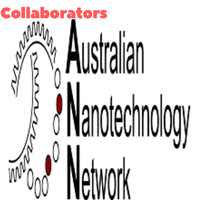
Jyh-Ping Chen
Chang Gung University, Taiwan
Title: Controlled release of tissue plasminogen activator from magnetic nanocarriers in targeted thrombolysis
Biography
Biography: Jyh-Ping Chen
Abstract
Thrombolytic drugs play a critical role in the treatment of various cardiovascular diseases including acute myocardial infarction, pulmonary embolism, deep vein thrombosis, arterial thrombosis and peripheral vascular thromboembolism. However, thrombolytic agents, such as tissue plasminogen activator, tend to dissolve both pathological thrombi and fibrin deposit at sites of vascular injury, resulting in hemorrhagic toxicity at therapeutic doses. Plasminogen activators also have short half-life and are immunogenic because of their foreign nature. By encapsulating proteins within novel carrier systems, an increased half-life and decreased immunogenicity might be obtained. Further, targeted delivery of thrombolytic agents followed by controlled drug release may reduce the risks of haemorrhage and toxicity associated with systemic administration, thus offering a promising, minimally invasive approach that could control and treat thrombosis. We have designed two magnetic nanocarrier systems for controlled release of recombinant tissue plasminogen activator (rtPA) in targeted thrombolysis. Ionic cross-linking of water-soluble chitosan with sodium tripolyphosphate in the presence of rtPA and magnetic nanoparticles could produce rtPA-encapsulated magnetic chitosan nanoparticles. Effective thrombolysis was demonstrated at an rtPA dose equivalent to 20% of the regular dose when the nanodrug was magnet-guided to the blood clot, followed by a triggered release of rtPA when switched to mobile magnetic guidance. An efficient thrombolytic drug delivery system using PEGylated thermosensitive magnetic liposome will be also discussed for magnetic targeted delivery of rtPA to the site of thrombus followed by temperature-triggered controlled drug release. The prepared nanodrug will be useful for magnetically guided target thrombolysis, followed by an alternating magnetic field for controlled release of rtPA by hyperthermic effects for treating thrombosis in a clinical setting.

